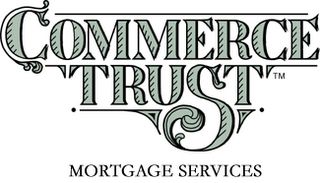"COMMERCE TRUST" TTAB Tiff Heads To The CAFC
Martell & Associates has appealed to the CAFC (No. 05-1186, docketed January 14, 2004) from the TTAB's ruling in Commerce Bancorp, Inc. v. Martell & Assoc. Financial Services Co., Opposition No. 91124853 et al. (October 5, 2004) [not citable]. The Board found the applied-for marks COMMERCE TRUST (in block letter and design forms, with TRUST disclaimed) for banking and mortgage services, likely to cause confusion with Opposer's previously used but unregistered mark COMMERCE BANK C and Design for banking and mortgage services.

Opposer asserted ownership of a "family" of "COMMERCE" marks, registered and unregistered, for various banking, financial, and insurance services: COMMERCE BANK C and Design, COMMERCE CAPITAL MARKETS, COMMERCE CHECKVIEW, COMMERCE ON-LINE, THE COMMERCE ADVANTAGE, COMMERCE!WOWZONE, COMMERCE!WOWZONE and Design, COMMERCE, COMMERCE BANK, and COMMERCE NATIONAL. Once again, however, the Board rejected the "family of marks" claim: Opposer never pleaded ownership of a "family" in its notices of opposition, and in any case Opposer submitted nothing more than "a few advertisements in which more than one of its marks containing the word COMMERCE is shown" -- not enough to demonstrate "that consumers would recognize the COMMERCE marks to represent a family."
Turning to the du Pont analysis, third party usage of similar marks for similar services played a "dominant role." Applicant Martell submitted Internet excerpts from 14 third-party websites, various yellow page listings, and numerous newspaper article excerpts showing use of the word "COMMERCE" as part of a business name in connection with banking services. Moreover, Opposer itself, in prior submissions to the PTO while seeking registration of its own trademarks, acknowledged that there are many third-party uses of "COMMERCE" and it asserted that "COMMERCE" is a suggestive term for financial services. In once case, Opposer submitted a list of 191 registered marks that contain the word "COMMERCE," 39 of them in class 36. Although Opposer's prior statements to the PTO are not binding on the Board, "they are 'illuminative of shade and tone in the total picture confronting the decision maker.'"
The Board concluded that the "scope of protection of opposer's COMMERCE marks is extremely limited. Essentially, opposer may use these marks only to prevent the registration of virtually identical marks for virtually identical services."
The Board then focused its attention on the common law mark COMMERCE BANK C and Design, because the rest of Opposer's marks "are for services that, in the context of the highly suggestive nature of the mark COMMERCE, are too different" from Applicant's services to support a likelihood of confusion finding.

Opposer established priority of use of its COMMERCE BANK C logo for services identical to those of Applicant Martell, offered through the same channels of trade to the same classes of customers. The Board deemed the marks at issue to be "virtually identical," their differences being "too minor to distinguish the marks." The supposed care and discrimination with which customers purchase financial services supported Martell's position, as did the third-party usage evidence. The lack of evidence of actual confusion, however, did not weigh against Opposer because the record did not contain information regarding the scope of Martell's use of its marks.
Balancing the du Pont factors, the Board concluded that "opposer's mark COMMERCE BANK C logo and applicant's COMMERCE TRUST marks are so similar that, when used on identical services, we find that applicant's marks are likely to cause confusion."
As pointed out in the CAFC's recent decision in Shen Mfg. Co. v. The Ritz Hotel Limited, 73 USPQ3d 1350 (Fed. Cir. 2004), the appellate court reviews the Board's conclusions of law de novo and its findings of fact for substantial evidence. Likelihood of confusion is a question of law based on underlying facts. Thus the CAFC may agree with the Board's assessment of the facts, yet may draw a different conclusion on the likelihood of confusion issue.
TTABlog Update: On December 7, 2005, the CAFC affirmed the Board's decision per curiam under Rule 36.
Text Copyright John L. Welch 2005.




0 Comments:
Post a Comment
<< Home